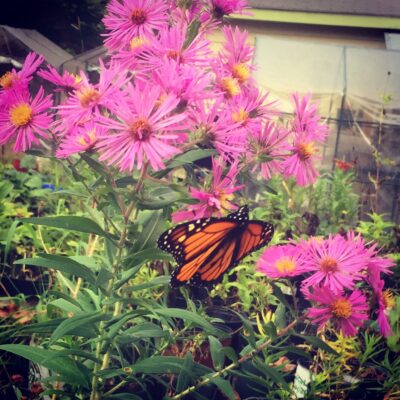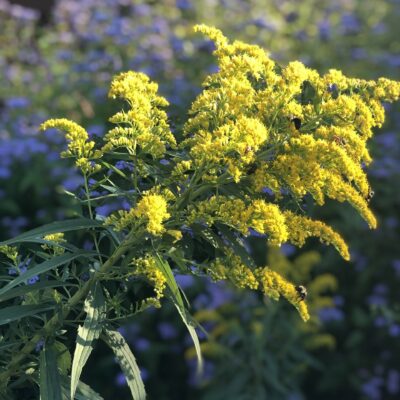Cutleaf Coneflower (Rudbeckia laciniata)
Common Name: Cutleaf Coneflower
Scientific Name: Rudbeckia laciniata
One half ounce of this seed contains hundreds of seeds. It is likely enough to grow between 20-100 new wildflower plants of this species. This is enough for most gardeners.
Description:
The native plant Cutleaf Coneflower is scientifically known as Rudbeckia laciniata. This striking and resilient native plant graces North American landscapes with its vibrant presence. Belonging to the Asteraceae family, this perennial herb is renowned for its distinctively cut leaves and golden-yellow, daisy-like flowers. Its cheerful blooms brighten meadows, prairies, and wetlands throughout its natural range.
Appearance:
This coneflower stands out with deeply incised, fern-like leaves that give the plant its “cutleaf” moniker. The basal leaves form an attractive rosette, while the stems can reach impressive heights. Often this wildflower towers above other native flora. The flowers, with their prominent central cones surrounded by golden petals, create a cheerful display that attracts pollinators such as bees and butterflies.
R. laciniata Habitat:
Cutleaf Coneflower is versatile in its habitat preferences, thriving in a variety of soil types and moisture levels. It is commonly found in wet meadows, along stream banks, and in open woodlands. This adaptability makes it a valuable addition to both naturalistic and cultivated landscapes. Both the aesthetic appeal and the contributions to local ecosystems are unparalleled.
Cultural Significance:
This native plant holds cultural importance among various Indigenous communities, who have historically used it for medicinal and ceremonial purposes. The striking appearance and resilience of the Cutleaf Coneflower have also made it a favorite among gardeners and conservationists alike.
Wildlife Support:
In addition to its aesthetic value, Rudbeckia laciniata plays a crucial role in supporting local wildlife. The nectar-rich flowers attract pollinators, and the seeds provide a valuable food source for birds. Its robust nature makes it an excellent choice for habitat restoration projects, helping to enhance biodiversity in degraded areas.
Conservation Status:
While Cutleaf Coneflower is not currently considered threatened or endangered, conservation efforts are essential to protect and preserve its natural habitats. As urbanization and land development continue, maintaining healthy populations of native plants like Rudbeckia laciniata becomes increasingly important for the overall health of ecosystems.
Cultivation in Gardens:
Gardeners often appreciate the Cutleaf Coneflower for its low maintenance and ability to thrive in a range of garden conditions. It adds a wild and naturalistic element to perennial borders and native plant gardens, providing a burst of color and attracting beneficial insects.
In Summary:
Rudbeckia laciniata, the Cutleaf Coneflower, stands as a resilient symbol of North America’s natural beauty. With its distinctive appearance, adaptability, and ecological contributions, this native plant continues to captivate both casual observers and dedicated conservationists, embodying the rich biodiversity that characterizes our diverse landscapes.
Want some design/build help with some habitat restoration landscaping that may include R. laciniata? Fill out our consultation request form. Someone from our team will be in touch soon.




